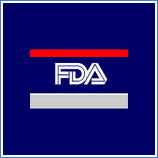The NIH just announced the formation of their National Center for Advancing Translational Studies (NCATS). It will swallow many of the projects now located in the National Center for Research Resources (NCRR). The NCRR funded specific projects supporting translation research in universities and small companies. These projects included everything from high throughput screening of various disease target enzymes, receptors and cells to GLP safety studies to GMP manufacturing. It looks like the new center will be more project and therapeutic area based than the NCRR was. The New York Times ran an article on January 22 suggesting that the center was going to function like a drug company. Francis Collins, Director of the NIH states in the NIH press release that that is not true. Nevertheless, the NCATS is definitely about drug discovery and, at least early, development.
Assuming that NCATS will take on antibiotic discovery and development projects this can be nothing but good news. Even though academia does not have the expertise to discover and develop drugs, if they work at obtaining that expertise, this could ultimately work in the sense that they might be able to discover new drugs and get them into phase II development.
In one interview, Dr. Collins noted that the NIH would be working closely with the FDA. I hope he was talking about the anti-infectives division. If true, and if he can fulfill his promise of exploring and implementing, with the FDA, new and modern trial designs which are FEASIBLE, NCATS could be a road forward to a new era of antibiotic discovery and development both in academia and in industry (or at least biotech).
So, one suggestion for Dr. Collins and the NIH is to get some people at NCATS trained in industry – hopefully in antibiotic discovery and early non-clinical and clinical development. A second suggestion is to start discussions with the FDA early since if the NIH is going to be stuck developing new antibiotics according to the current set of guidances issued by the FDA, they may as well stop before they start. At the end of the day, for the NIH or for industry or for biotech, we must remove the FDA roadblock.








